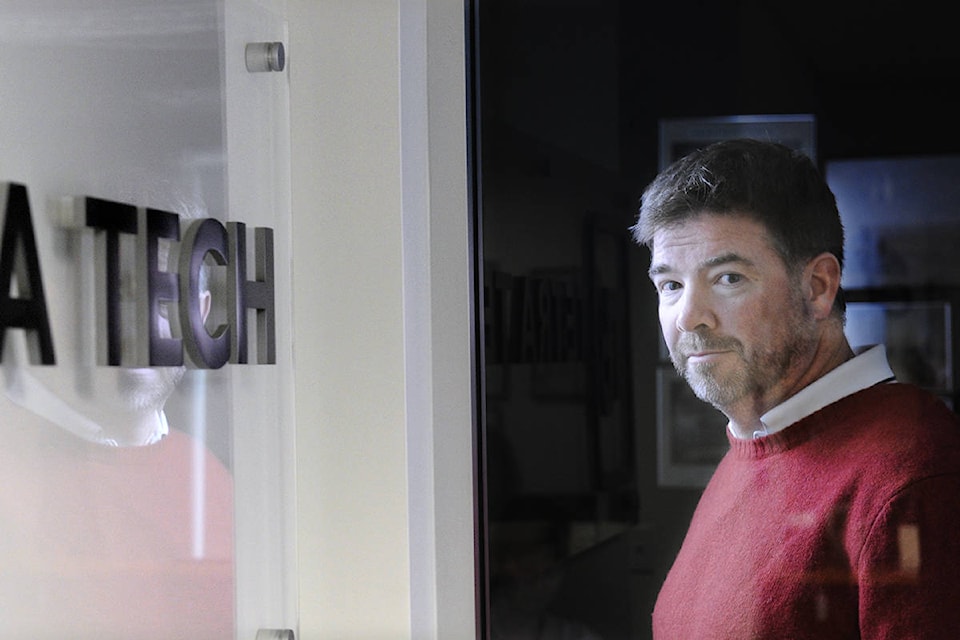Concerns about increased pressure on water and sewage systems by new infill lots, expressed by some residents in country residential areas, do not hold up to the data, says the company that compiled geotechnical and hydrological report for the city.
Engineering firm Tetra Tech was hired by the city to put together the report used to determine the sustainability of 13 proposed infill sites. Based on this report, which was completed in June, the city eliminated three sites for geotechnical issues. Some residents have expressed concerns about the validity of the report. One Mary Lake resident, Stuart Young, derided the work as “just a desktop study.”
Ryan Martin, Tetra Tech’s manager for the Yukon and northern British Columbia and a hydrological technician, said that is true. The report is a desktop study, which is “what would normally be done” for this kind of project, Martin said.
“This study is based on a lot of good information,” he said. He added there are some areas where Tetra Tech made recommendations for further testing as well.
Tetra Tech was involved in doing some of the initial studies used in the report, he said.
Some of the geological data used in the study is from the 1980s. Martin said this didn’t really matter, because, for the most part, geotechnical conditions do not change much over time.
One of the criticisms Young levelled at the study was based on the kind of hydrological testing used to determine water pressure. Young said they had used a “pressure” test, which is less accurate than a “pump test.”
Martin said that was not quite accurate. While the data used was collected from pressure tests — which Martin said are more accurately called “air lift tests” — this style of test is commonly used in wells for private residences. An air lift test is usually done by a driller, who shoots air down the well for several minutes to force up water and can draw a rough “ball park” gauge of flow from the data collected from this. A pump test is usually only done for wells which are expected to have a high demand placed on them, such as those which are intended to be communal, he said. This involves pumping water in the well for 24 hours or more and checkings for the rate of refilling and the water pressure at regular intervals.
“I’ve researched other jurisdictions in B.C. and Ontario and it’s not a common practice to do (pump testing),” he said.
“What if every homeowner was told they had to do a pump test and it would be $5,000? Would they be happy with that?”
Martin said the results of the air-lift tests showed the water table should be able to support the infill areas, as the water demand for a country residential home with an estimated four people living in it is “pretty small.” The water needs for a house that size in country residential are approximately 250 litres of water per person per day, he said, which the accepted infill areas were found to support.
There have been anecdotal reports of homeowners in country residential areas losing water pressure or having to truck water in when new houses went up in their area. Young said that when another house was put in near his own, his own well dropped by 35 per cent.
At the size of lots being proposed — just over one hectare each — an infill lot on one of the intended sites should be able to have a septic bed and a well, making more study unnecessary, Martin said.
Five test wells were drilled in Whitehorse Copper subdivision, Martin said. These wells were all found to have enough water.
Greg Bull, an engineer living in Mary Lake not affiliated with Tetra Tech, said he read the report and found it technically sound. But he had concerns with how the recommendations of the current official community plan (OCP) are being implemented by the city.
The report notes that people may have water quality issues or have to drill multiple wells to hit water on some of the proposed sites. The OCP requires country residential areas being considered for lot sites to be able to have on-site water and sewage systems “where possible.”
The study notes that the cost of drilling a well in the Mary Lake area is between $17,500 and $22,500 per well.
Mike Gau, director of development services for the city, said that the city is not selling the country residential infill lots with services, in part because this keeps the price down. Services such as sewer and water are the buyer’s responsibility.
Contact Lori Fox at lori.fox@yukon-news.com
